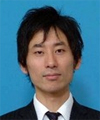 |
|||||||
|
|
|||||||
|
Feature Articles: The Challenge of Creating Epoch-making Services that Impress Users Vol. 13, No. 7, pp. 22–27, July 2015. https://doi.org/10.53829/ntr201507fa5 Towards the Creation of Attractive Services Based on an Understanding of UsersAbstractTo create information and communication technology services that are fun for users, it is necessary to ensure that such services match user needs and characteristics, and to do this, we need to fully understand users. We introduce here the processes involved in service creation and the design area that NTT Service Evolution Laboratories is focusing on. We also show a specific example of what we do to understand the user and visualize a service image. Keywords: service design, human-centered design, design thinking 1. Introduction1.1 Human-centered designThe NTT Group is continually striving to create attractive information and communication technology (ICT) services for users. An attractive service is a service that users will want to use and will continue to enjoy using. The methodology of creating such services is called service design [1], and it has attracted a lot of attention in leading companies. NTT Service Evolution Laboratories has been conducting research on the process and specific methods of service creation. We have also been working on the development of support tools and related guidelines, as we believe that service design will become more and more important in the future. 1.2 Process of service designThe process and the target area of service design are illustrated in Fig. 1. The process of human-centered service design begins by acquiring a deep understanding of different kinds of people. It is especially important to estimate the needs of users who are expected to use the service. The needs of users can be clarified by observing and finding out about their lifestyle, values, hobbies, and attitudes toward ICT services, among other things. For some services, it is also necessary to understand the relevant environmental and social background.
Obtaining such information makes it possible to create a service concept. In this phase, we use various techniques such as holding workshops to generate excellent ideas. In this approach, we focus on obtaining data in order to understand people and society and use the data to generate a number of ideas. We then gradually narrow down the ideas. We believe that the user is best understood by the user him/herself. Therefore, the approach may involve a user participatory design approach such as obtaining user input from the early phases of service design. We continue to gradually embody the concept born in this phase as a service image, and we use a technique to actually draw the concept as a story, for example, as a three-frame comic. By interviewing target users, we are able to review the service concept to make sure that the concept matches the needs of users. If the service concept does not seem to match user needs, we can modify it. It often happens that service developers determine that an idea does not match the needs of the user very well. As a result, the user may not want to use the service. To prevent this, it is necessary to interview potential users at an early stage so as to align the service idea to the user needs. In this way, the idea can gradually be refined while repeatedly obtaining user feedback, and an appealing service can be created that users will want to use. 1.3 Designing specific servicesAfter the user needs are clarified, we start designing a specific service. In this phase, we also consider the design of the screen transitions and the user interface, as they will greatly affect the ease of use. To streamline this process, we assembled guidelines on user characteristics that summarize the points necessary to create easy-to-use services. When developing a service, we conduct user evaluations as often as possible to see if the users are able to use the service as we intended [2]. If some aspect of the service seems difficult for the user to use, we modify the user interface. Fixes carried out in a more advanced phase of service development will increase costs. Therefore, when considering the screen specifications, it is important to evaluate them in the early stages as much as possible by using a technique such as prototyping on paper. NTT Service Evolution Laboratories has so far focused on consumers as the target area of service design. In the future, we will further develop the service process in order to create hospitality services looking towards 2020 and to create the B2B2X (business-to-business-to-X) service through collaboration with other industries. We will accumulate information on the characteristics of target users and will continue to work on creating guidelines focusing on user characteristics. In addition, we plan to establish a system to strengthen the service design process for the entire NTT Group. 2. Research methods to understand the userIn human-centered service design, it is important to understand the characteristics of the user. To understand such characteristics, we typically conduct behavioral observations and user interviews. 2.1 Behavior observationBehavior observation is an ethnographic technique of studying a society or culture. In this technique, we visit places where the target user is active and observe the user behavior. We also surmise the reasons for the behavior of the user. As a result, we derive the user’s needs and values, and also the challenges the user may potentially face. Here, we introduce an example of behavior observation targeting foreign tourists. In this observation, we focused on the behavior when foreigners were in contact with people and things, and we observed characteristic actions such as engaging in dialog with local people and fellow travelers. In this observation, we also focused on actions that appeared to be unrelated, as it is important to observe the behavior without forming any preconceived ideas. We recorded anything we noticed in the observations in a notebook along with the time and the surrounding environment. Here, the user actions and the viewer’s interpretations are both recorded. As a result of observing foreigners, we found that they exhibited some interesting behavior before and after purchasing activities. For example, in a Tsukiji sushi shop, foreign tourists enjoyed not only eating sushi but also watching the chef prepare the sushi. In addition, foreigners also enjoyed conversing with the clerk and the surrounding customers. We also observed a case in which a chef who did not speak any foreign language displayed the ingredients on a tablet in order to give detailed information on the sushi. In this observation, we found that foreign tourists are often interested in things that do not typically interest Japanese people and that they find pleasure in casually communicating with Japanese people. 2.2 InterviewsThere are a variety of approaches when conducting interviews. In our approach, we interview users about their past experience in order to extract their needs and challenges. To know the users deeply, however, we do not just listen to their answers to our questions that we prepared in advance. Rather, we ask the reasons for the action the user took or how the user felt in a certain situation. We also ask them whether or not they had experienced another situation where they felt the same way. In addition, questions that can only be answered Yes or No are useless. It is necessary to ask open questions in order to obtain more diverse answers. For example, when listening to a user’s story about going to a tavern, we should not just ask whether the tavern was fun. It is better to ask the user to explain their feelings by instructing them, “Please tell me anything you felt when you went to the tavern.” This will lead to a more relevant and substantial interview. Here, we introduce examples of interviews with foreigners living in Japan and foreigners traveling in Japan, which we conducted in order to understand more about the foreigners’ lives. We interviewed foreigners living in Japan about the following items: • Opportunities they are interested in experiencing in Japan • Changes in their impressions of Japan • Experience when coming to Japan for the first time • Current life These interviews revealed useful information on the daily lives of foreigners and how they feel. In contrast, we mainly interviewed travelers about the following: • Behavior while traveling • Background of actions • Habits The results revealed information about how travelers feel and act. For example, one traveler remarked, “In convenience stores in Japan, the packaging of goods is not the same as in my home country. Therefore, I could not buy an item I was looking at because I did not know the contents.” As a result, we found that foreigners find some things inconvenient that are a matter of course for Japanese people. We gather the data from these behavioral observations and interviews and organize the data into interesting points and anticipated needs. The results enable us to learn more about the true nature and behavior of foreigners without stereotyping them according to a previous image. For example, in one behavioral observation, we observed that foreigners do not use their smartphones outdoors as often as Japanese people do. Therefore, we conducted an interview and found that foreigners generally use their smartphones only at free Wi-Fi spots such as guesthouses. Because the cost of mobile services in Japan is high, the foreigners do not have a mobile service contract. It is therefore possible that services combined with free Wi-Fi would strongly appeal to foreigners. In this way, the resulting data can be used to construct an image of the service user. We can also use the data when conceiving an idea for a service. 3. Service design of Video NabittoWe introduce here Video Nabitto as a specific example of service design. This service was initiated as a trial by NTT WEST in October 2014 [3]. Video Nabitto was developed with the aim of improving the convenience of the Hikari BOX+ set-top box provided by NTT WEST. This service enables users to search for videos via audio input on a smartphone or tablet, to display the search results on television (TV) with the Hikari BOX+, and to view the videos on the big screen. This service was achieved by combining NTT’s voice interaction platform technology that can narrow down search criteria by vocal input and multi-screen technology to display video on the screen of different devices such as smartphones, tablets, and TVs. In addition, this service enables users to reduce the number of operations for video searching and to find the videos they want to watch right away so that they can enjoy YouTube videos on a large-screen TV. We contributed to the concept creation, visualization of the idea, and the prototype evaluation. We first interviewed multiple involved parties that were close to the target user image and investigated their backgrounds and needs. We conducted a mini-workshop based on the survey results and created three service ideas. Then we interviewed users to confirm their needs and ways of utilizing such a service. Finally, we evaluated the service idea, brushed it up based on the evaluation results, and created a single concept (Fig. 2). To further crystallize the idea, we created service usage scenarios and a draft of a user interface (Fig. 3). We also asked potential users to evaluate a developed prototype, and then we improved the prototype by identifying what areas were difficult to use. The prototype was used to implement an actual trial. By repeating the evaluation from the initial steps of the service design, we created a service that matches the needs of users who want to easily watch video content on TV. Such a process is often time-consuming and expensive, but this time it was possible to carry out a minimal investigation in a short time and to prevent the development time from being significantly extended.
4. Universal web design initiativesBy furthering our understanding of users, we will be able to provide information in accordance with user characteristics. We have been working thus far to conduct research and create guidelines on universal web design that is intended to convey easy-to-understand information to a variety of people, including the elderly and people with disabilities. Web content is used by different kinds of users in different environments. There is not only one form of information (Fig. 4). In universal web design, the content is displayed using simple wording for children and displayed in large characters for seniors. In addition, text-to-speech software, which represents information by sound, can be used for disabled users. By devising the web content based on such design criteria, it can be changed in a variety of ways to suit specific users.
In addition to web content, ICT services also have a feature enabling information to be presented and changed flexibly. Changing the representation according to the user makes it possible to develop more attractive and easy-to-use services. Before creating guidelines, we collected knowledge on user characteristics by obtaining ratings of various services. User characteristics include not only physical characteristics of the user, but also their lifestyle, values, hobbies, and attitudes about ICT services. We then created the guidelines based on the obtained characteristics. These guidelines can then be used by people who design services. It is important that anyone can easily create services for people who have difficulties in using information technology such as the elderly and people with disabilities. The guidelines will make it possible to create services for such users. In addition, we are also working on applying the resulting knowledge to the development of hospitality services towards 2020. 5. Future workNTT Service Evolution Laboratories will continue to study the design of ICT services that users will want to use and will continue to use. By leveraging people-friendly design, we can develop easy to understand and attractive services for users and can contribute to enhancing people’s lives and work. References
|
|||||||



















